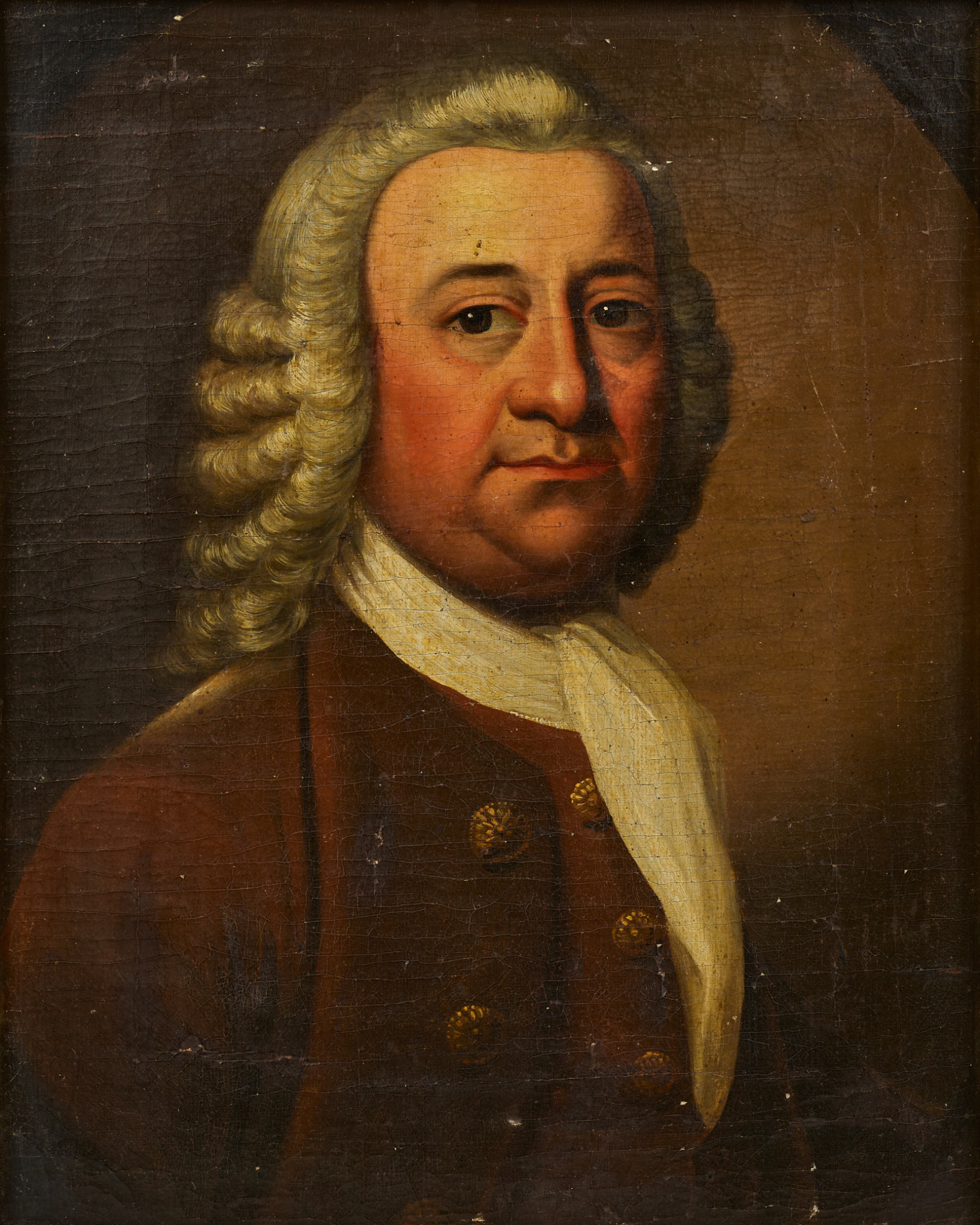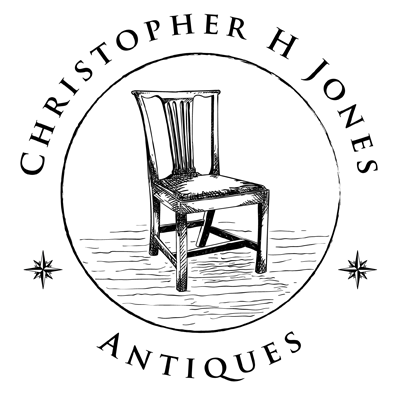PORTRAIT OF JACOB MOTTE (1700-1770)
Oil on canvas
Jeremiah Theus (1716-1774)
Charleston, South Carolina
C 1750
12” x 15” stretcher, 16.5” x 19.5” overall
Jeremiah Theus was Charleston’s most well known and most highly regarded portrait artist for much of the 18th century. He maintained his role as the city’s premier resident portrait painter for at least thirty years, an unusually lengthy tenure in an era when artists were largely iterant. Theus traveled little nor needed to as he enjoyed the continuous patronage of the city’s wealthy elite ensuring his artistic, social and financial success.
Born and trained in Switzerland, he first advertised his presence in the South Carolina Gazette in 1735 and was apparently well established by the early years of the following decade. His list of patrons included many of the most prosperous merchant and landholding families. Theus in South Carolina, and his contemporaries Wollaston and Hesselius in Maryland and Virginia “were undoubtedly the most popular of the portrait painters of their time.” At his death in 1774 Theus left a significant estate and was eulogized in Charleston as “a very ingenious and honest Man… who had followed the Busineess of a Portrait-Painter here upwards of 30 Years.” The most current scholarly discussion of Theus’ career can be found in Carolyn. Weekley’s Painters and Paintings in the Early American South, 2013, from which much of the above information was sourced.
According to the National Gallery of Art, Theus’ “earliest works were small. Among his first patrons was plantation owner Barnard Elliott, for whom he painted a series of family portraits, each measuring about 20 by 16 inches. By the mid-1750s he began to use a larger 30 by 25-inch format, the size of most of his work.” This, along with the estimated age of sitter Jacob Motte as 45-50 suggests that this portrait dates to the early years of Theus’ career, circa 1750.
Jacob Motte, 1700-1770, and his wife were among Theus’ earlier sitters. As treasurer of the royal colony of South Carolina from 1743 until his death in 1770, Jacob Motte played a prominent role in the affairs of the colony. He was born into a Huguenot – French protestant – family and seemed to have earned his wealth as both a merchant and landowner as did many of his Charleston contemporaries. In his The Huguenots of Colonial South Carolina, historian A. H. Hirsch documents the commercial and social roles of this important group and provides considerable detail on Jacob Motte, his family and his daughter in law, Rebecca Brewton Motte, an important figure in revolutionary Charleston in her own right. Hirsch notes the portraits of Motte and his wife by Theus – and the “disposition of some of the richer French Protestants to secure the best portraits obtainable.” Theus also painted a portrait of at least one of Motte’s sons. At the time of his death, Motte’s estate was valued at some 228,000 pounds sterling, an enormous sum for the day.
The portrait is in virtually untouched “attic” condition. It is unlined, on what appears to be its original stretcher and in an early 19th century frame. The portrait descended in the family along with another family portrait, letters and journals, Jacob Mottes’ signed Book of Common Prayer and other heirlooms.


